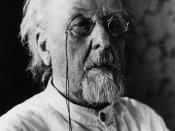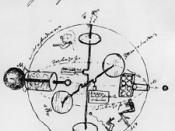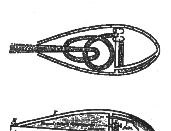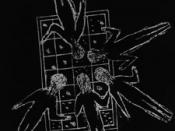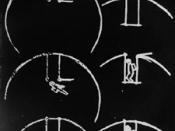Konstantin Tsiolkovsky
Konstantin Tsiolkovsky was born to a poor family on September 17th 1857 in the village of Izhevskoe, south of Moscow. He was born with disabilities due to his hearing problems, and was dropped out of school. All the knowledge he gained was from self-studying from hundreds of hours reading in libraries.
Tsiolkovsky was the all time pioneer of astronautics. He played an important role in theorising the future of space travel, rocket propulsion, and of course, the development of the Soviet and Russian space program.
At the age of 17, inspired by Jules Verne's science fiction novels, he first dreamt about the possibility of space flight. From that onwards, he started to think about the problems of space vehicle design, and occupied himself with mathematics, physics, chemistry, analytical mechanics, astronomy and astronautics, among others.
On March 1883, he wrote "The Theory of Gases", describing the kinetic properties of gas.
He demonstrated the reaction principle by his experiment of opening a container filled with compressed gas. This experiment was based on Newton's Third Law of Motion. Tsiolkovsky concluded that the movement of the container could be regulated by changing the pressure of the gas released.
This discovery prompted him to complete a manuscript in the same year called "Free Space", which was later published in 1956. The manuscript described the life and ways of motion in free space, the effects of weightlessness in space, the design for altitude control and an airlock for exit into space, all done without any mathematical calculation. He also drew a primitive design of a spacecraft as shown below.
It was in 1903, where his well known article "Issledovanie Mirovykh Prostransty Reaktivnymi Priborami" (Exploration of the Universe with Reaction Machines) was published in "Science Review" magazine. It explained how a reaction thrust obeying Newton's Third Law of Motion can carry human into space, escaping the Earth's cradle.
"The Tsiolkovsky Rocket Equation", created by him in May 10 1897 also appeared alongside the article. It was the first publication in the world about this subject. The equation is:
where u is the final rocket velocity, v is the velocity of the exhaust gases, Mo and M are the starting and ending masses of the rocket, and uo is the initial rocket velocity prior to the fuel burn.
In addition, some other ideas he proposed in his publications also include using graphite rubber to steer a rocket and using pumps to drive propellant from storage tanks into combustion chamber, possible medical problems of human in space, artificial satellites and orbiting space stations, the use of quartz windows and refractive outer layer for spacecraft to stand the excruciating heat, etc.
Tsiolkovsky also published his cosmic philosophy as well. "Plan of Space Exploration" published in 1926, described a 16-steps program where human civilisation could outlive its dying Sun and eventually settles down in the universe. He also predicted the use of pressurised suits when leaving a spacecraft, the method of constructing large orbital settlements, the use of plants for life support and the use of solar radiation to grow food and supply energy. He truly believed that "happiness" is the absence of all kind of sufferings. And to achieve this, mankind would ultimately be able to expand into the cosmos, master the nature, destroy possible natural catastrophe and achieve happiness for all.
Before his death in 1935, Tsiolkovsky wrote over 600 scientific articles about astronautics, mechanics, physics, biology, philosophy, mathematics, and even science fiction stories. It is amazing that his publication and ideas are so accurate and futuristic.
Tsiolkovsky is recognised around the world as the "father of the space flight theory". Although he never had a chance to see his work materialise due to Russian political instability and lack of resources, but nonetheless, his theories have a huge impact on the first generation of the Russian space engineers and ultimately stimulate a booming Russian rocket and space program that emerged years after his death.
"Earth is the cradle of humanity, but one cannot remain in the cradle forever."
http://www.informatics.org/museum/tsiol.html
http://inventors.about.com/library/inventors/blrocketTsiolkovsky.htm
http://www.russianspaceweb.com/tsiolkovsky.html
http://www.astronautix.com/articles/theceage.htm

